Ecosystem in bat cave Phu Quoc (Hang Doi Phu Quoc)
Table of Contents
Horseshoe bats – Rhinolophus – Dơi móng ngựa
Horseshoe bats are considered small or medium-sized microbats. The fur, long and smooth in most species, can be reddish-brown, blackish, or bright orange-red. They get their common name from their large nose-leafs, which are shaped like horseshoes. The nose-leafs aid in echolocation; horseshoe bats have highly sophisticated echolocation, using constant frequency calls at high-duty cycles to detect prey in areas of high environmental clutters. They hunt insects and spiders, swooping down on prey from a perch, or gleaning from foliage.
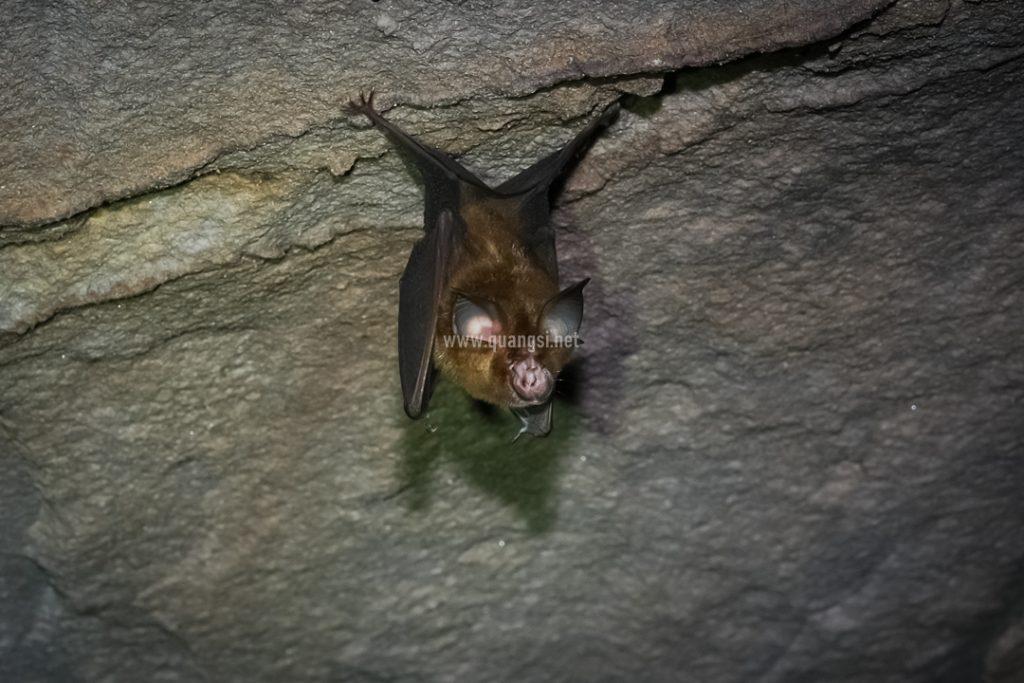
Red tail pit viper – trimeresurus cardamomensis – Lục đuôi đỏ
Trimeresurus are ovoviviparous, bearing live young, producing young by means of eggs which are hatched within the body of the parent, as in some snakes.
Trimeresurus venom varies in toxicity between species, but all are primarily hemotoxic and considered to be medically significant to humans.
The diet of Trimeresurus species includes a variety of animals, including lizards, amphibians, birds, rodents, and other small mammals.
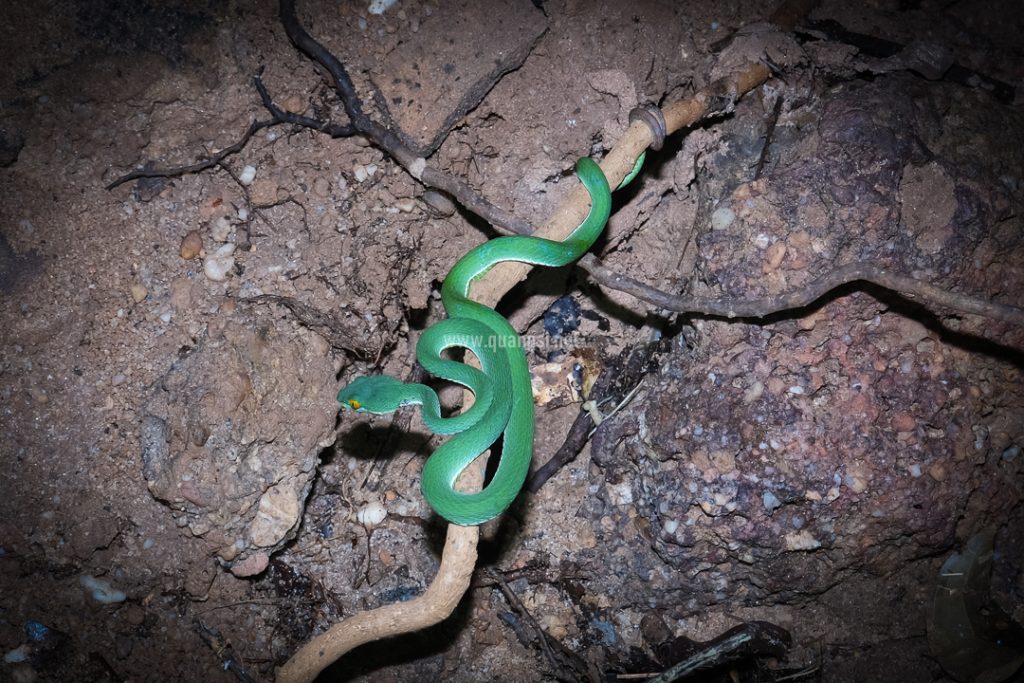
Greenhouse camel cricket- Diestrammena asynamora – Tôm rừng
Tachycines asynamorus is a cave cricket and the type species of the genus Tachycines (Rhaphidophoridae). In English-speaking countries it is known as the greenhouse camel cricket or greenhouse stone cricket for its propensity for living in greenhouses. It was first described in 1902 Russian entomologist Nicolai.
Camel crickets and cave crickets are odd-looking, hump-backed insects that are commonly found in caves, basements, cellars, and similar places. They are generally tan, reddish brown, or dark brown, but they may appear black in the dark environments where they are found. They have a hump-backed appearance, long antennae, and large hind legs. These crickets are wingless and lack the ability to fly or chirp. They can jump a surprisingly long distance.
Adults and nymphs feed on organic debris, insects, and other small arthropods.
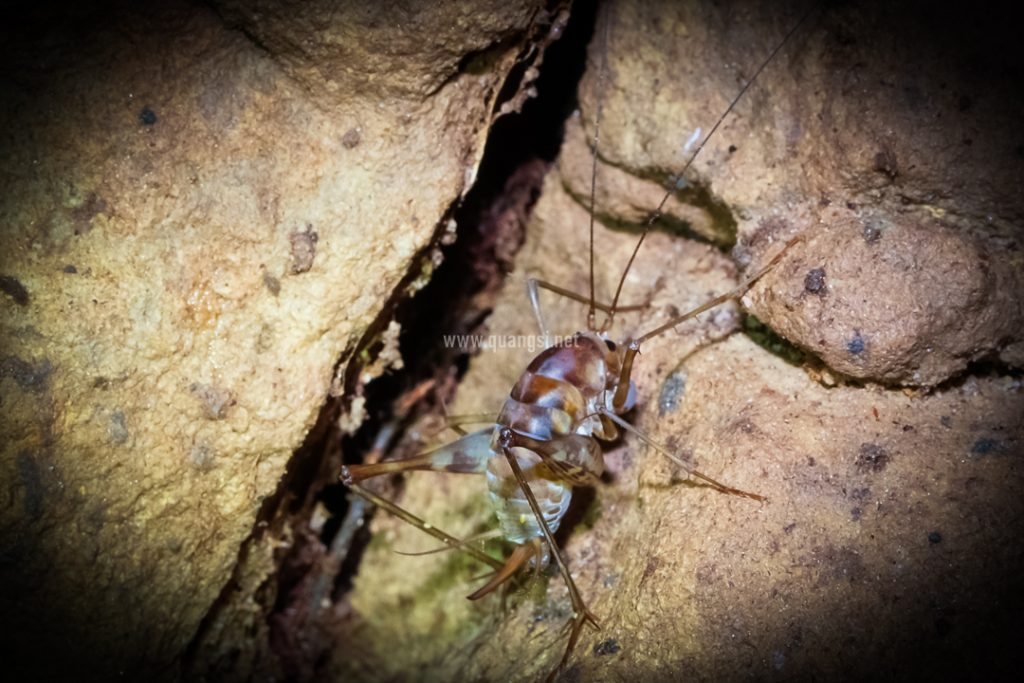
Sylvirana guentheri Günther’s Amoy Frog.
Its natural habitats are subtropical or tropical moist lowland forest, subtropical.
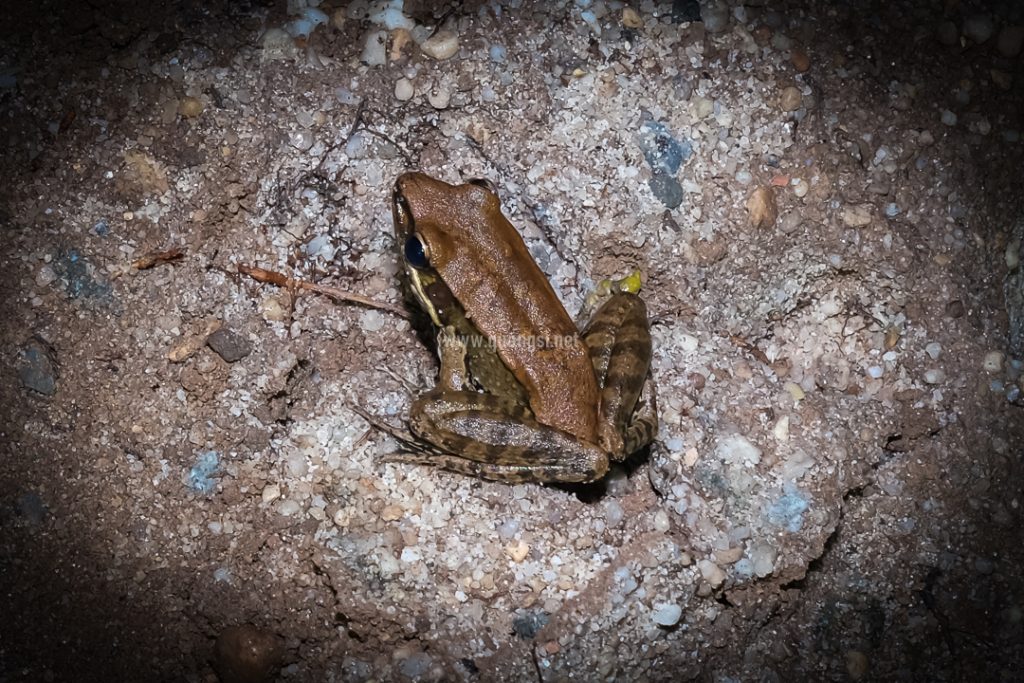
Chilobrachys sp Vietnam blue
Vietnam Blue Tarantulas are carnivorous and primarily feed on a diet of insects such as crickets, roaches, and mealworms.
Vietnam Blue Tarantulas are known for their semi-aggressive behavior. They can be skittish and may exhibit defensive postures when provoked. While not typically recommended for handling due to their speed and potential for aggression, they are fascinating to observe in their enclosures.
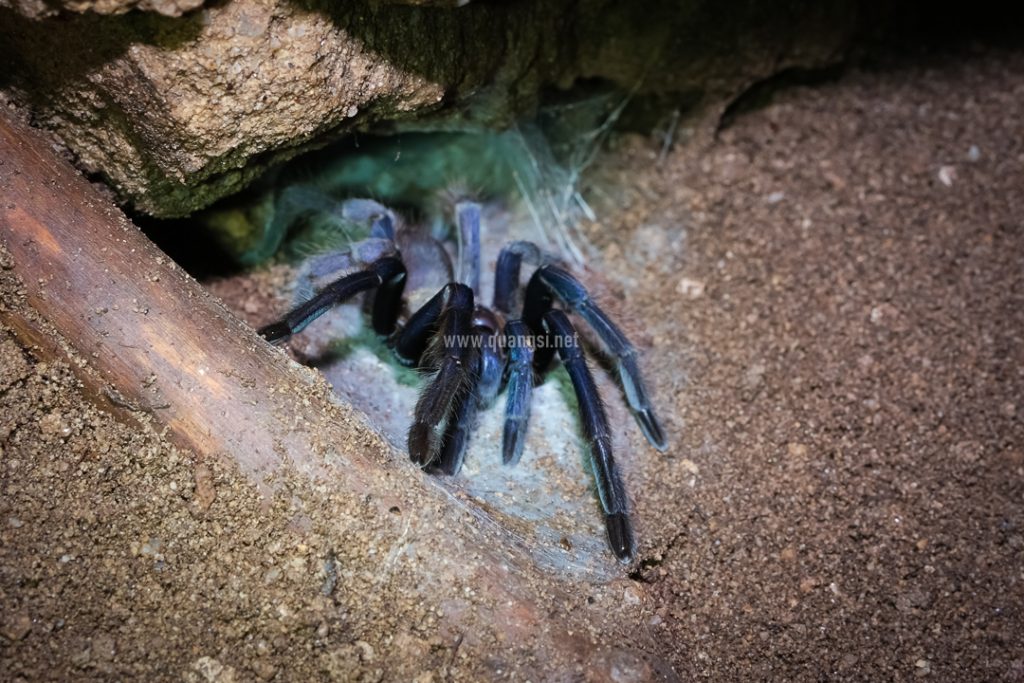
Cave cockroach – pycnoscelus striatus.
And cockroaches deserve special praise for their role in caves. Cockroaches keep cave ecosystems running. They munch and grow on guano, and are in turn eaten by predators like spiders and scorpions.
A cockroach meal transfers the nutrients in guano to the rest of the cave residents. Cockroaches also eat dead animals.
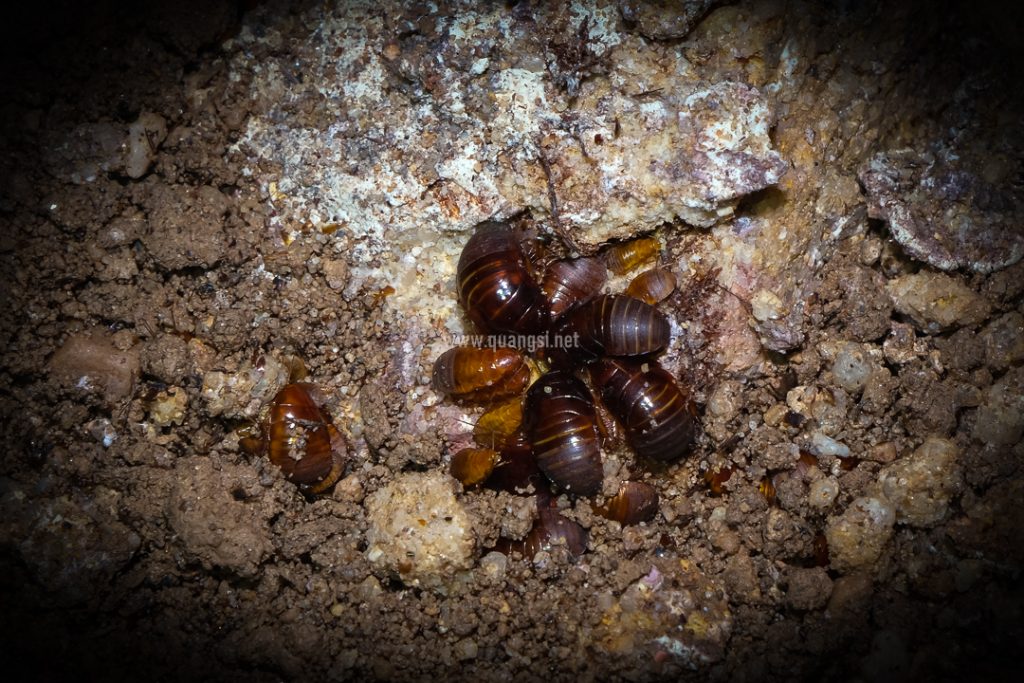
Long-legged cave centipede – Thereuopoda longicornis.
They have 30 legs and poison claws. Local people say they can inflict painful bites.
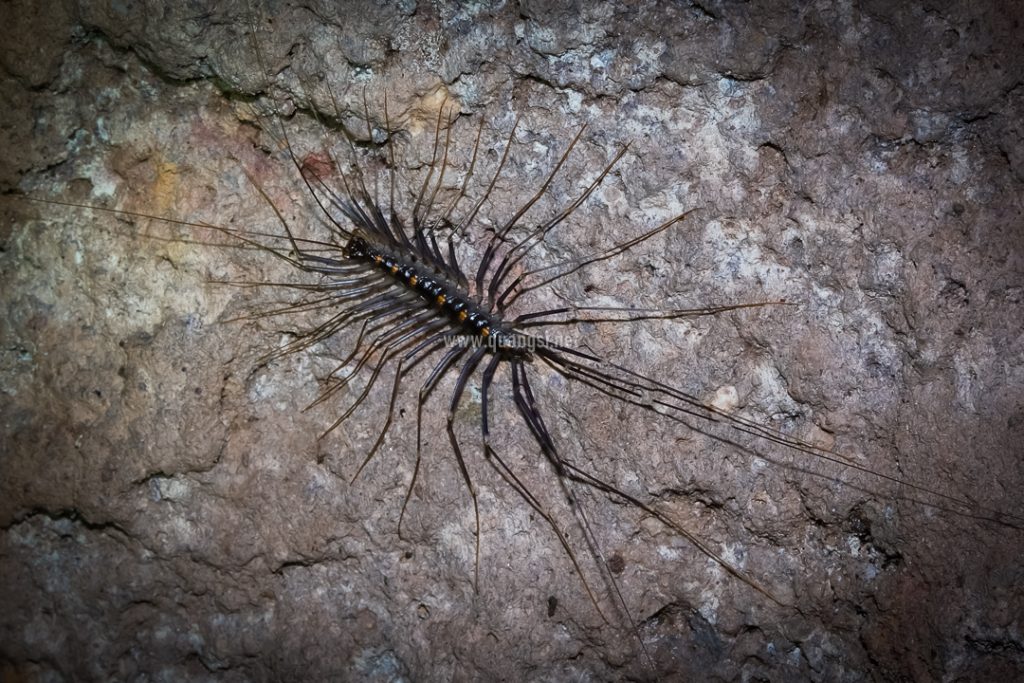
Asian common toads – Duttaphrynus melanostictus
Asian common toads live an average of 4 years in the wild and up to 10 years in captivity. Asian common toads are nocturnal; during the day adults will hide under rocks, leaf litter, logs, and human made structures.
The toads are slow moving and fairly timid. Asian common toads are insectivorous and are known to feed on many insect pests known to human
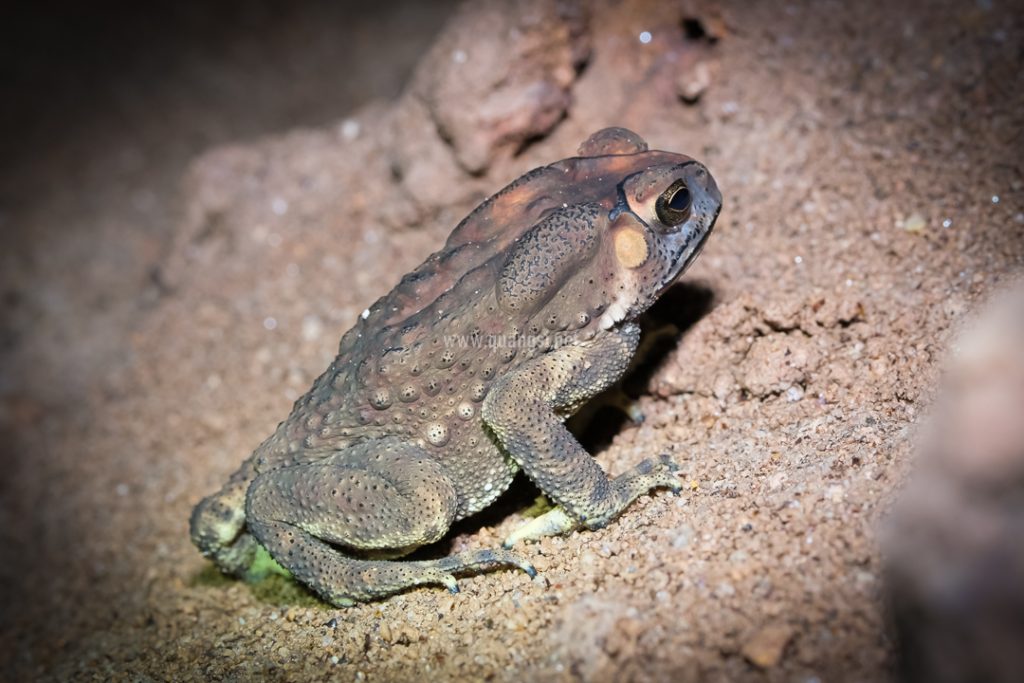
If you want to discover the ecosystem in the bat cave Phu Quoc with our local guide. Check our tour
Si was a wonderful guide from the get go. He was responsive and upfront about everything. I customised my trip to include herping. And even though it wasn't the best season to find snakes, Si went out of his way to make my trip an awesome one, from local knowledge to taking me to secret locations.
I cannot recommend him enough!Review from Danie
